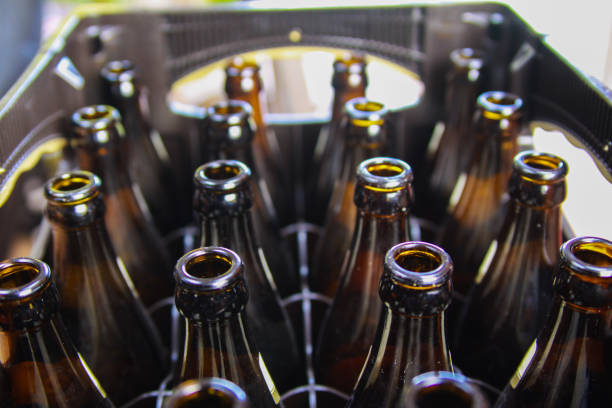Embarking on a journey through the world of beer is akin to exploring a rich tapestry of culture, tradition, and innovation. Within this vibrant landscape, one question frequently bubbles to the surface, capturing the curiosity of both casual sippers and connoisseurs alike: “How many beers in a case?” This seemingly simple inquiry opens the door to a fascinating exploration of beer’s role in social gatherings, its evolution alongside technological advancements, and its enduring presence in our celebrations and everyday lives.
Crafted with the expertise garnered from years of immersion in the brewing industry and beer culture, our article delves deep into the heart of this question. We not only unveil the standard count of beers nestled within a case but also weave through the historical paths that led to this universal standard. Our narrative is enriched with insights into regional variations, the environmental implications of packaging choices, and the craft beer movement’s impact on traditional packaging norms.
As we navigate the economic and legal landscapes that shape beer packaging and distribution, our exploration is more than a mere count; it’s an invitation to understand the cultural significance of beer cases. From the communal bonds they fortify to the regulatory frameworks that govern them, every facet of the beer case is meticulously examined.
Prepare to have your curiosity piqued and your thirst for knowledge—as well as beer—whetted. Whether you’re a veteran beer enthusiast or a newcomer to the world of hops and barley, this article promises a comprehensive look into the dynamics of beer cases, offering valuable insights and intriguing tidbits that will enrich your appreciation of this beloved beverage. Join us as we uncover the layers behind the simple question of “How many beers in a case?” and celebrate the rich history and vibrant culture of beer.
Contents
Understanding the Standard Case
Let’s start by defining what exactly a standard beer case is. Typically, a standard beer case refers to a package that contains 24 aluminum cans or 24 twelve-ounce bottles of beer. It has become the go-to packaging size for many breweries around the world. But why 24? Well, the choice of 24 beers in a case has a practical reason. It’s a manageable quantity that can easily be transported and stored. Plus, it’s a convenient amount for social gatherings, allowing everyone to have a few rounds without running out too quickly.
The Evolution of Beer Packaging
Over the years, beer packaging has undergone significant changes. While the standard 24-pack case remains popular, other configurations have emerged to meet different consumer needs. For example, you might have come across 30 packs or even smaller craft beer 4 packs. These variations reflect the evolving tastes and preferences of beer drinkers.
Technological advancements have also played a role in beer packaging. Breweries are now using innovative materials and designs to enhance sustainability and convenience. From biodegradable cardboard cases to easy-to-carry handles, packaging has become more eco-friendly and user-friendly. However, it’s important to consider the environmental impact of packaging materials and promote responsible recycling practices to minimize waste.
Global Perspectives and Variations
Across the globe, beer case contents fluctuate by country based on cultural factors and brewery norms:
- Europe: 20 or 24 packs of 11.2 oz bottles
- Australia: 24 packs of 12 oz bottles (stubbies)
- Japan: Cases range from 20-30 12 oz bottles/cans
- China: Usually 10 or 20 650 ml bottles
- Africa: Quarts or 660 ml bottles in 6/12-packs
- Brazil: Cases of 600 ml cans, 6-8 per pack
Understanding regional case differences helps travelers avoid receiving incorrect quantities. It also provides insight into international brewing and distribution practices.
Economic and Legal Considerations
Packaging and distribution have significant economic implications for breweries. The choice of case size and packaging type can impact production costs, transportation efficiency, and ultimately, the pricing of beer. Breweries need to strike a balance between meeting consumer demands and optimizing their operations.
Legal and regulatory factors also come into play. Different countries may have specific regulations regarding alcohol packaging, including restrictions on sizes and labeling requirements. Breweries must navigate these legal frameworks to ensure compliance and meet consumer expectations.
Cultural and Social Impact
Beyond sheer beer quantity, iconic images of beer case stacks represent good times and gathering together. brands capitalize on this cultural association.
Who can forget the memorable Budweiser frog perched on a pyramid of cases? Or Coors Light’s mountains turning blue when chilled cases are opened? Pop culture examples like this showcase beer cases’ strong link to celebration, friendship, and fun.
Even retailers leverage bulk case purchases as “party packs” or event offerings. For many, stocking up on that 24 or 30-pack for game day or a cookout is a cherished tradition, nostalgically transporting them back to carefree younger days.
Craft Beer Movement

The rise of craft brewing has disrupted the ubiquity of major beer brands’ packaging in yet another way – through differentiation. With an emphasis on quality over quantity, craft beers arrive primarily in 6, 12, or 24-bottle cases often with unique, artful designs.
By veering away from high volume options, craft brewers underscore that their focus is on distinctive flavor profiles and ingredients versus mass market appeal. Special releases may even limit purchase amounts per person.
Yet at the same time, craft beers’ surge in popularity has inspired larger specialty case offerings for smash hits like Dogfish Head’s 60 Minute IPA or New Belgium’s Fat Tire. The growth of beer subscription services catering to craft aficionados also indicates a desire for regular bulk deliveries.
For craft drinkers, cases remain prized possession allowing them to share and savor their favorite discoveries and rarities.
FAQs and Fun Facts
Now, let’s address some common questions about beer cases and share some intriguing beer trivia:
- How many cases of beer are sold worldwide each year?
- While exact figures are hard to come by, it’s estimated that billions of cases of beer are sold globally each year, highlighting the immense popularity of this beverage.
- Are beer cases always made of cardboard?
- No, beer cases can be made from a variety of materials, including cardboard, plastic, and even wood. The choice of material depends on factors such as cost, durability, and sustainability goals.
- Can you mix and match beers in a case?
- Absolutely. Many breweries offer variety packs, allowing you to sample different beer styles within a single case. It’s a great way to explore and discover new flavors.
On a related note, did you know that April 7th is celebrated as National Beer Day in the United States? This day commemorates the end of Prohibition in 1933 and thereintroduction of legal beer sales. It’s a time to appreciate the rich history and cultural significance of beer in society.
Moderate beer consumption, when done responsibly, can also have some health benefits. Studies have shown that moderate beer intake may have cardiovascular benefits, such as reducing the risk of heart disease. However, it’s important to note that excessive alcohol consumption can have detrimental effects on health. It’s always wise to drink in moderation and be mindful of your personal limits.
Consumption Patterns and Health Considerations
Beer case purchases correlate directly with consumption rates. According to Gallup, the average American drank about 5.8 beers per week in 2019.
Other research reveals men consume beer more frequently than women, and 18-29 year olds drink the most beers per capita annually followed by 50-64 year olds. Income levels also influence beer purchasing activity and volume.
Of course, while moderate beer intake may offer some advantages, excessive drinking carries significant health risks ranging from liver damage to cardiovascular disease. As a standard guideline, the USDA defines moderate drinking as 2 or fewer drinks daily for men, 1 daily for women. Consulting your doctor for personalized guidance is recommended.
Final Thoughts
In conclusion, understanding the world of beer cases goes beyond knowing how many beers are in a standard case. It involves appreciating the historical context, considering the environmental impact, and recognizing the cultural and social significance of these packaging units. Beer cases bring people together, facilitate social connections, and contribute to the enjoyment of beer in various settings.
When purchasing beer, it’s essential to specify your desires and preferences to ensure satisfaction. Whether you’re looking for a standard 24-pack, a craft beer variety pack, or something entirely unique, the beer world offers a wide range of options to suit your taste.
So next time you crack open a cold one, take a moment to appreciate the beer case that brought it to your hand. Cheers to the joy of beer, the camaraderie it fosters, and the memories it creates. Remember to drink responsibly, savor the flavors, and enjoy the delightful world of beer.

At the age of 25, chef and owner Michael Scognamiglio opened with confidence Bacco Italian restaurant.







